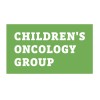
Anti-CD38 Antibody Treating APS With Thrombocytopenia
Antiphospholipid SyndromeThrombocytopeniaTo evaluate the safety and efficacy of anti-CD38 antibody in the treatment of antiphospholipid syndrome with secondary thrombocytopenia in patients who have not responded adequately or relapsed after first-line treatment and at least one second-line therapy including rituximab and/or TPO-RA.

Ritlecitinib in CTCL
CTCLMycosis Fungoides1 moreThe purpose of this research study is to evaluate the effectiveness and safety of Ritlecitinib in skin and blood in persons with Cutaneous T-Cell Lymphoma (CTCL). CTCL is a rare type of cancer that starts in the white blood cells and eventually can result in rashes or tumors in the skin. This study includes a 24 week Treatment Period and a 24 week Follow-up Period. This study will involve physical examinations, visual assessments, laboratory tests, PET-CT scans, electrocardiograms, photographs of your skin, skin biopsies, and hearing tests.

Mismatched Related Donor Versus Matched Unrelated Donor Stem Cell Transplantation for Children,...
Acute Lymphoblastic LeukemiaAcute Myeloid Leukemia1 moreThis phase III trial compares hematopoietic (stem) cell transplantation (HCT) using mismatched related donors (haploidentical [haplo]) versus matched unrelated donors (MUD) in treating children, adolescents, and young adults with acute leukemia or myelodysplastic syndrome (MDS). HCT is considered standard of care treatment for patients with high-risk acute leukemia and MDS. In HCT, patients are given very high doses of chemotherapy or radiation therapy, which is intended to kill cancer cells that may be resistant to more standard doses of chemotherapy; unfortunately, this also destroys the normal cells in the bone marrow, including stem cells. After the treatment, patients must have a healthy supply of stem cells reintroduced or transplanted. The transplanted cells then reestablish the blood cell production process in the bone marrow. The healthy stem cells may come from the blood or bone marrow of a related or unrelated donor. If patients do not have a matched related donor, doctors do not know what the next best donor choice is or if a haplo related donor or MUD is better. This trial may help researchers understand whether a haplo related donor or a MUD HCT for children with acute leukemia or MDS is better or if there is no difference at all.

A Study to Investigate Pharmacokinetics, Safety and Tolerability of Long-Acting Cabotegravir Plus...
HIV InfectionsThis is an open-label, dose-escalation study to investigate the safety, tolerability, and pharmacokinetics (PK) of single subcutaneous (SC) administration of long acting (LA) Cabotegravir (CAB) 200 milligrams per milliliter (mg/mL) with Recombinant Human Hyaluronidase PH20 (rHuPH20) (Part A) and CAB 400 mg/mL without rHuPH20 (Part C) and CAB 400 mg/mL with rHuPH20 (Part D). Part A of the study (CAB 200 mg/mL with rHuPh20) has been closed to further enrolment based on preliminary results.

Clinical Study of Chimeric Antigen Receptor T Lymphocytes (CAR-T) in the Treatment of Relapsed/Refractory...
Relapsed Non-Hodgkin LymphomaRefractory Non-Hodgkin Lymphoma1 moreThis is a phase I clinical study to evaluate the safety and efficacy of CAR-T infusion preparation in the treatment of CD19-positive relapsed/refractory non-Hodgkin lymphoma.

Designing Virtual Reality-based Software for People With Multiple Sclerosis
Multiple SclerosisThe study aims to designing virtual reality-based testing and rehabilitation software for people with multiple sclerosis and assess the feasibility of software. Also, the effects of an 8-week virtual reality-based upper extremity training in persons with multiple sclerosis will be investigated.

Caplacizumab and Immunosuppressive Therapy Without Firstline Therapeutic Plasma Exchange in Adults...
Thrombotic Thrombocytopenic PurpuraThis is a single group, treatment, Phase 3, open-label, single-arm study to evaluate the efficacy and safety of caplacizumab and immunosuppressive therapy (IST) without firstline therapeutic plasma exchange (TPE) with primary endpoint of remission in male and female participants aged 18 to 80 years with immune-mediated thrombotic thrombocytopenic purpura (iTTP). The anticipated study duration per participant without a recurrence while on therapy is maximum 24 weeks (ie, approximately 1 day for screening + maximum 12 weeks of treatment for the presenting episode + 12 weeks of follow-up). Participants will have daily assessments during hospitalization and weekly visits for assessments during ongoing treatment with caplacizumab and IST. There will be 3 outpatient visits for assessments during the follow-up period. There will be two additional follow-up visits for participants who do not have ADAMTS13 activity levels of ≥50% at the time of caplacizumab discontinuation.

Mirvetuximab Soravtansine With Bevacizumab Versus Bevacizumab as Maintenance in Platinum-sensitive...
Ovarian CancerPeritoneal Cancer1 moreGLORIOSA is a Phase 3 multicenter, open label study designed to evaluate the safety and efficacy of mirvetuximab Soravtansine as maintenance therapy in participants with platinum-sensitive ovarian, primary peritoneal or fallopian tube cancers with high folate receptor-alpha (FRα) expression.

Human CD19 Targeted T Cells Injection(CD19 CAR-T) Therapy for Relapsed and Refractory B-cell Non-Hodgkin's...
B-cell Non-Hodgkin's LymphomaA Phase Ⅱ Clinical Study Evaluating the Efficacy and Safety of Human CD19 Targeted T Cells Injection (CD19 CAR-T) Therapy for R/R B-NHL. Patients will be given a conditioning chemotherapy regimen of fludarabine and cyclophosphamide followed by a single infusion of CD19 CAR+ T cells.

Cycling of Topical Steroids for Treatment of EoE (Eosinopilic Esophagitis)
Eosinophilic EsophagitisThe purpose of our research study is to assess whether patients with EoE who have achieved control of their disease on topical Fluticasone or Budesonide are able to cycle or take breaks from their treatment with continued remission of their EoE. There will be 30 participants enrolled in this study. There will be 15 patients who will stay on steroid therapy every day and 15 patients who will cycle their steroid therapy on and off to help us compare the two groups. The cycling group will cycle their steroid therapy in a three-months on three-months off fashion.
